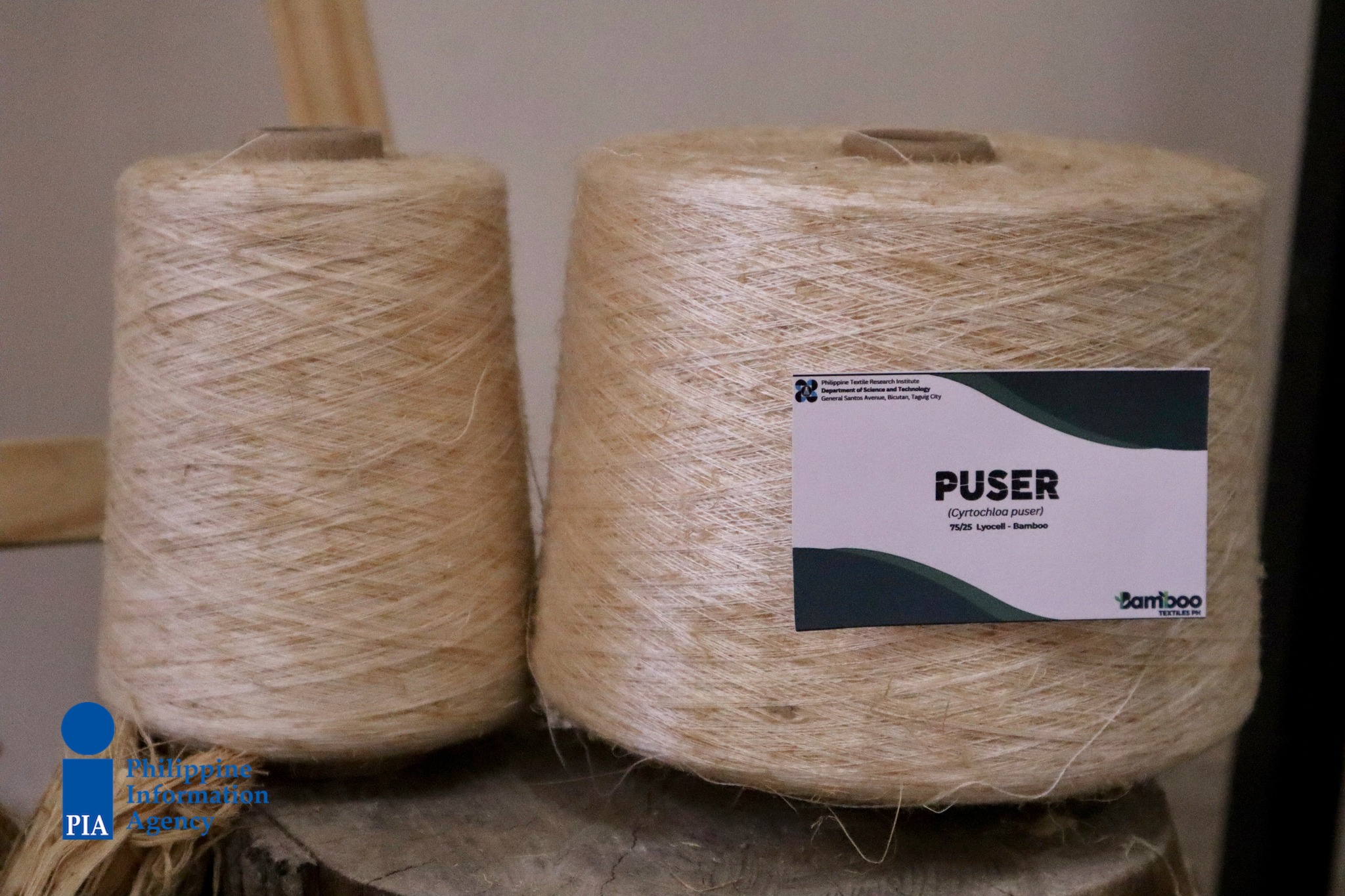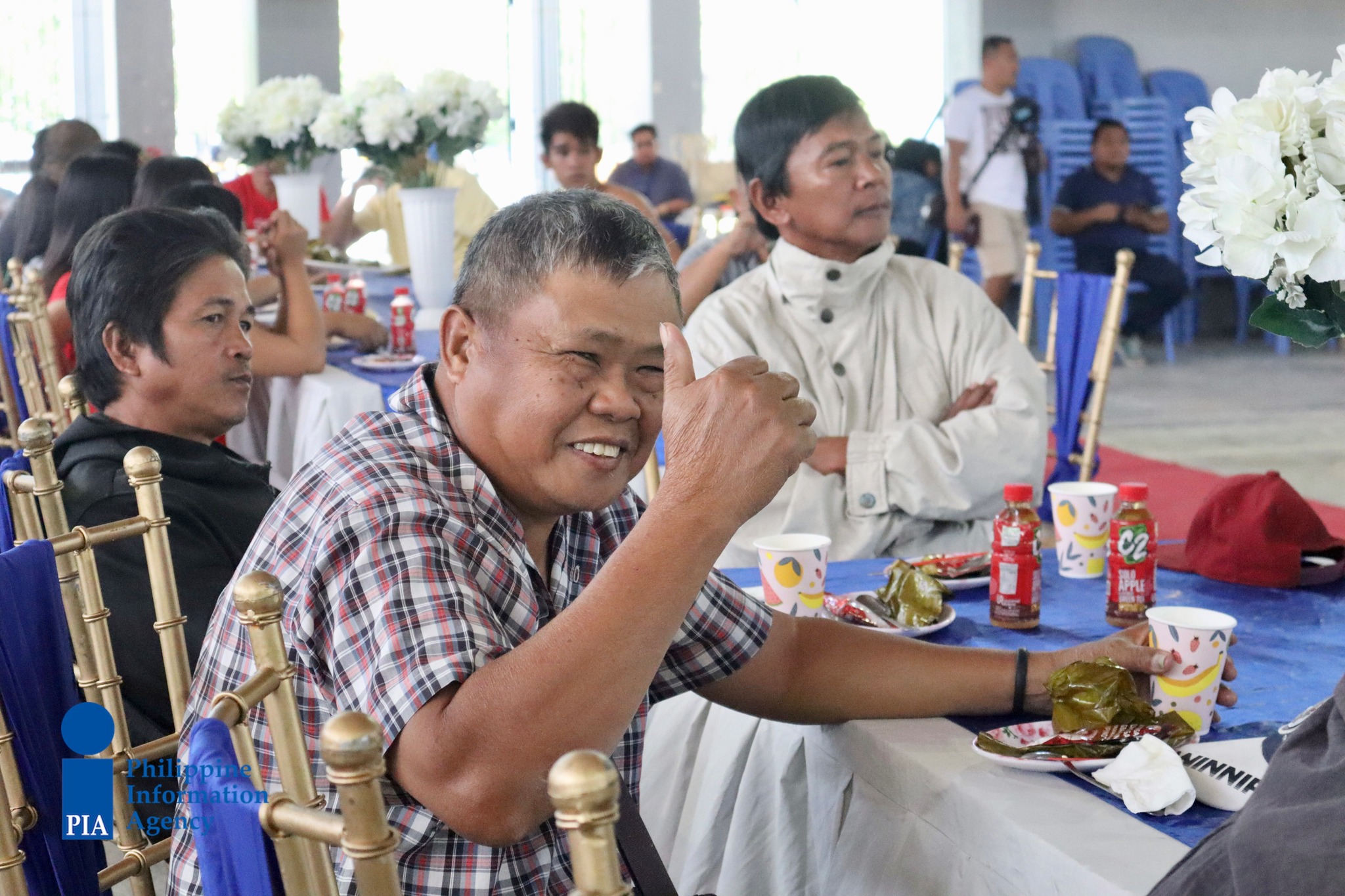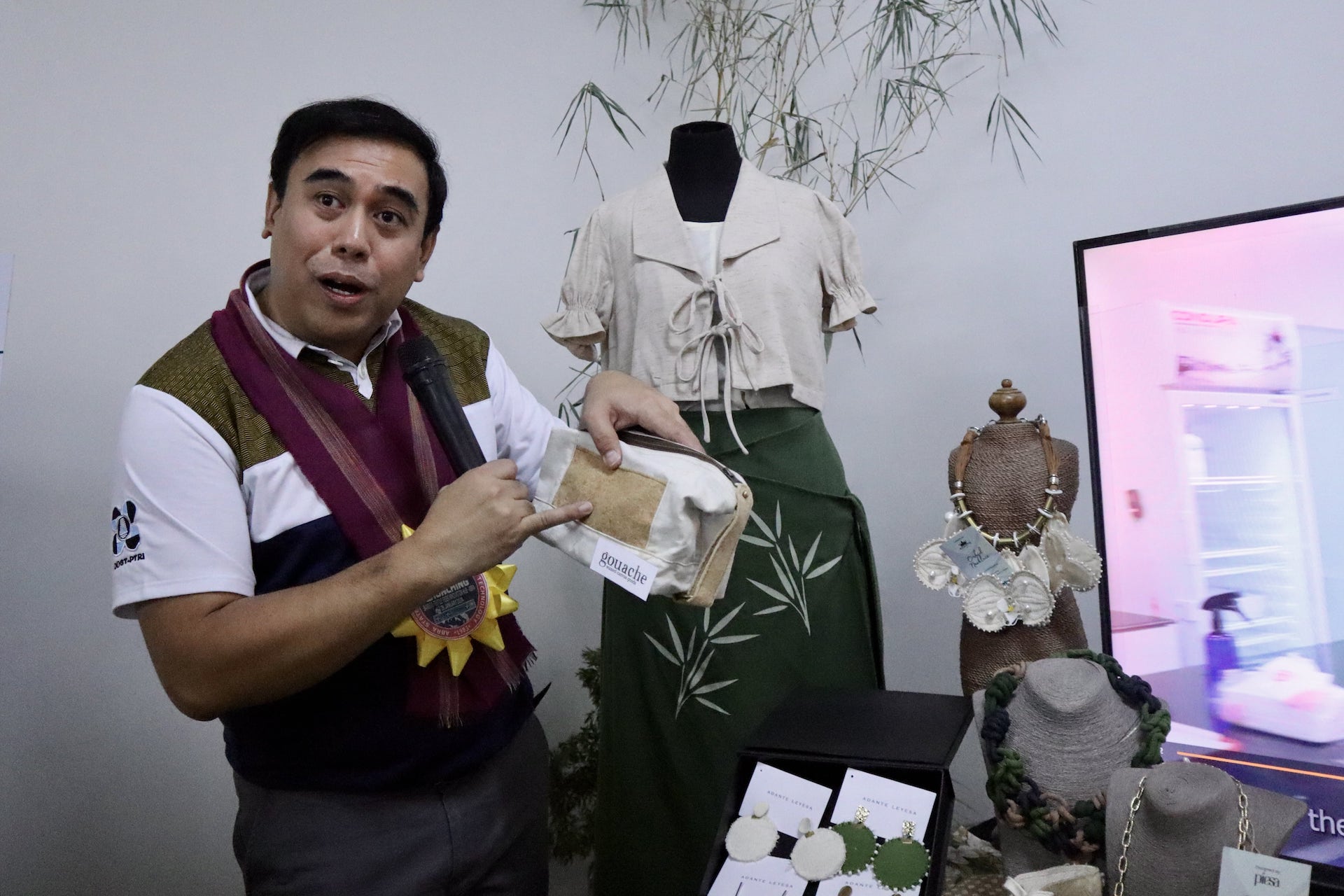The province of Abra continues to position itself as the bamboo capital of the Cordillera.

Bamboo textile potentials
Bamboo is used for making basket and other crafts, as construction material, and even takes center stage annually in the Kawayan Festival of the province.
With the newly opened Bamboo Fiber Textile Innovation Hub at the University of Abra (UA) Main Campus in Lagangilang, farmers and communities in Abra can now produce fiber that can be used to make clothes, bags, accessories, and shoes.
Jenelie Caya of the Research and Development Division of the DOST-Philippine Textile Research Institute (PTRI) explained that bamboo has a 35 percent fiber recovery as compared to the one to two percent fiber material from pineapple leaves and banana pseudo-stem.
“Bamboo is a very rich source of textile material and mataas ang ating magiging value addition for our bamboo fiber na nasa P250 per kilo. Ang treated fiber and opened version ay umaabot na P1,000,” she said.
This value addition to the bamboo products in Abra is now possible with the innovation hub that is also capable to produce treated fiber.
Aside from its high fiber recovery, bamboo as source of fiber is sustainable, indigenous, and environment-friendly.
Department of Science and Technology (DOST) Cordillera director Nancy Bantog is optimistic with this first bamboo fiber textile innovation hub in the region which can drive the local economy of the province.
“We recognize the significance of bamboo as an emerging high-value commodity here in the Cordillera, and its abundance in Abra, originally used for structural purposes and furniture-making. Bamboo is now expanding to textiles,” she said.
Science for the People
“Dakami nga farmer ket nasayaat unay daytoy nga programa ta makaited ti employment ken ma-utilize dagitoy kawayan tayo,” Silvestre Ballacillo said.
He shared that he is optimistic with the hub that will open opportunities for the bamboo industry that will help not only farmers in Lagangilang but other Abra municipalities.
“It must be able to help the community kasi it’s not just about innovation, it is making it useful sa ating mga farmers, sa ating mga stakeholders in the ground,” emphasized PTRI Director Julius Leaño Jr.

Leaño is pushing for farmer participation in fiber production through ensuring access to the facility and equipping farmers with skills and knowledge to protect themselves.
“Gusto natin yung engagement, hindi yung magbebenta lang sila ng bamboo kasi ang mura ng bamboo pole. Bigyan natin sila ng pagkakataon na sila yung mgaprocess ng sarili nilang fibers.”
Aside from production, Leaño also ensured the beneficiaries of an available market for their bamboo fiber products. He said that PTRI will be the first to buy their fiber production to be used in making uniforms for at least 1.9 million government employees. This, he said, is in compliance with Republic Act No. 9242, or An Act prescribing the use of the Philippine tropical fabrics for uniforms of public officials and employees.
“This is capacity building to make our communities be more innovative, enterprising, and at the same time, take advantage of the vast resources that we have in the province,” he added.

Operation and sustainability
“Any farmer nga adda kawayan na ket open daytoy nga umay tapno ag-adal daytoy fiber technology production,” UA President Gregorio Turqueza shared.
He said that as part of the state university’s mission through its extension program, the school will train instructors who will teach bamboo farmers interested to learn the bamboo fiber technology.
Turqueza is hopeful that the technology which they can share to communities especially farmers will help uplift the lives of stakeholders and improve the province’s economy.
In a media interview, Turqueza also shared plans of the university to build a nursery for bamboo to ensure the production of bamboo raw materials that can be processed in the hub.
“Iti eskwela tayo, ag-aramid tayo ti nursery para daytoy bamboo ta isu met ti iwaras tayo para kadagiti farmers tayo,” he said.
The school is also collaborating with the Department of Environment and Natural Resources for bamboo seedlings, and the Department of Trade and Industry for the marketing of processed products.
The provincial government and the local government of Lagangilang also shared support for the initiative that will not only bring better profit for farmers, but will also maximize the use of bamboo, a major product that has become part of the life and culture of Abrenians.(JJPM-PIA Abra)




